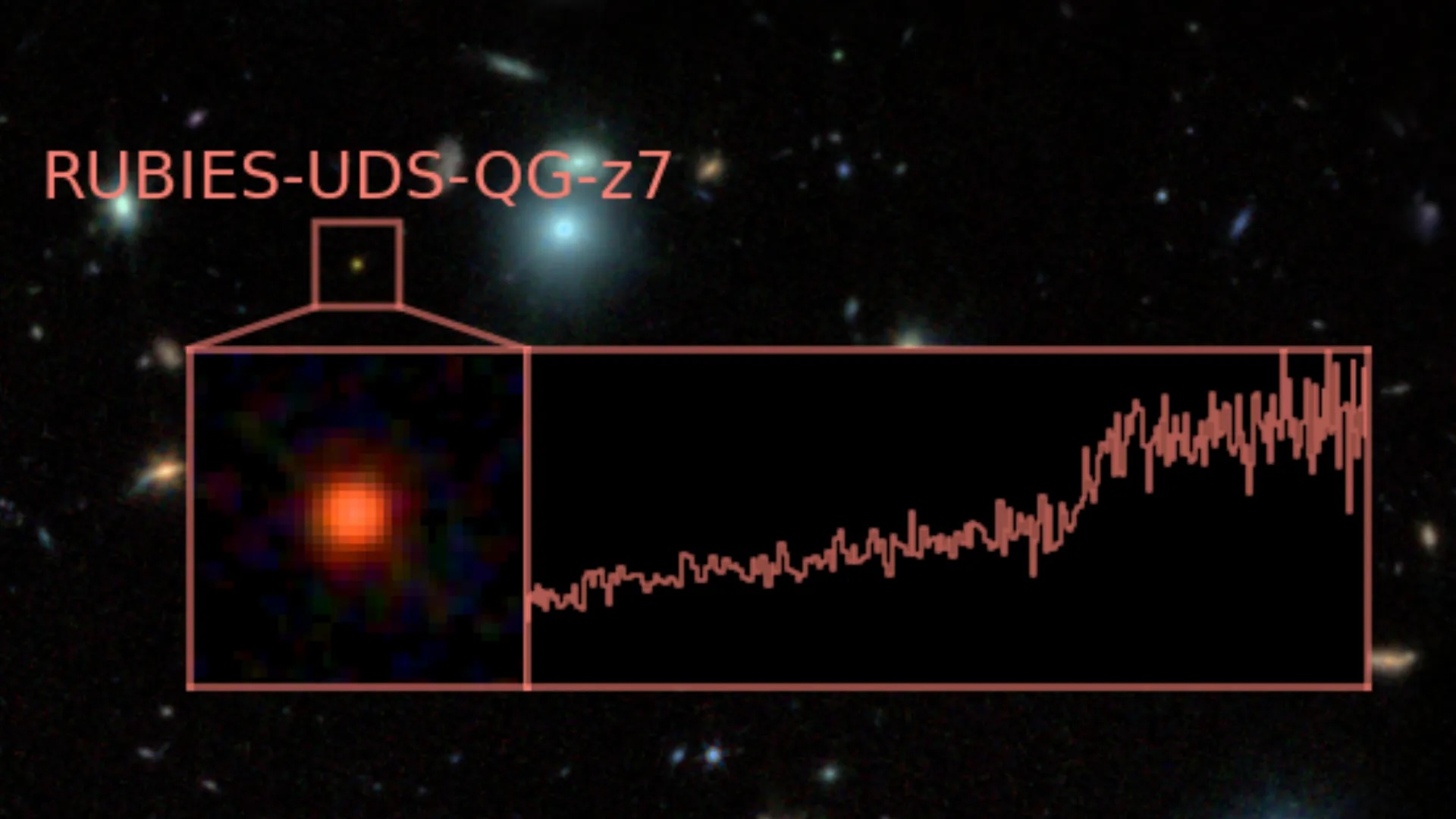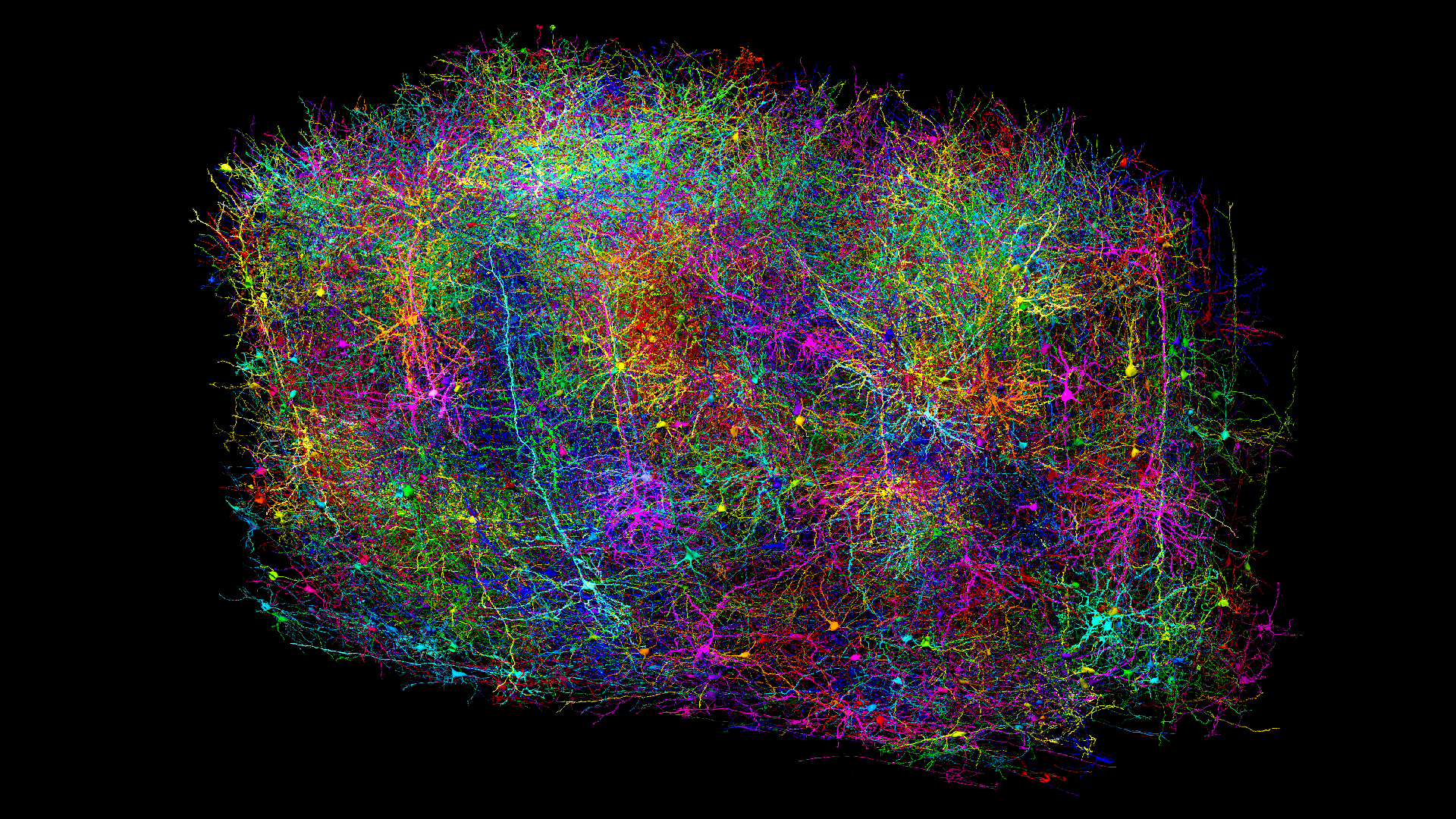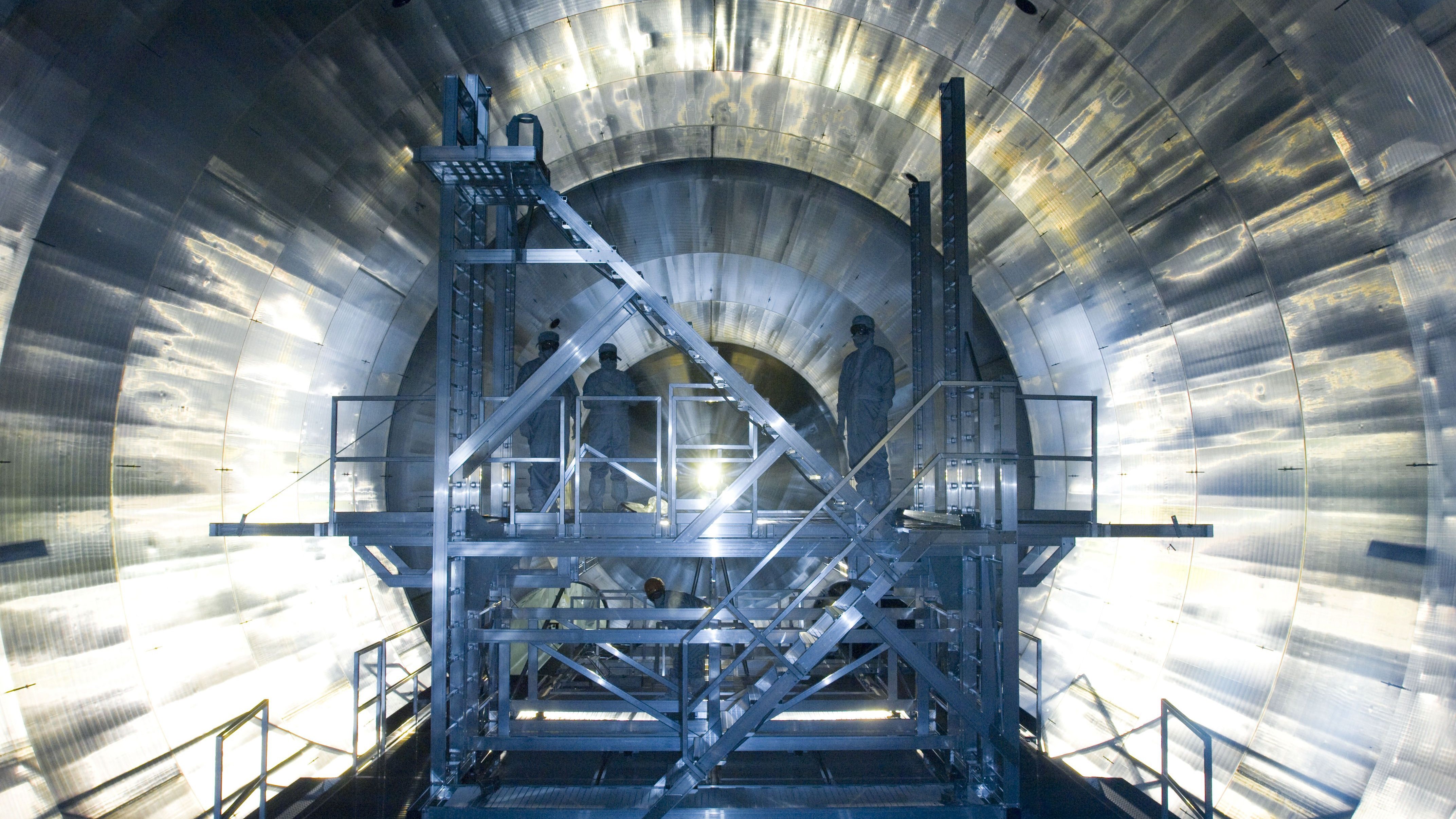In a first, breakthrough 3D holograms can be touched, grabbed and poked
Futuristic holograms you can manipulate have become a reality sooner than we thought, thanks to breakthrough display.
Holograms that can be physically manipulated have made their way out of science fiction and into real life thanks to a breakthrough in mixed reality technology.
In a new study uploaded March 6 to the HAL open archive, scientists explored how three-dimensional holograms could be grabbed and poked using elastic materials as a key component of volumetric displays.
This innovation means 3D graphics can be interacted with — for example, grasping and moving a virtual cube with your hand — without damaging a holographic system. The research has not yet been peer-reviewed, although the scientists demonstrated their findings in a video showcasing the technology.
"We are used to direct interaction with our phones, where we tap a button or drag a document directly with our finger on the screen — it is natural and intuitive for humans. This project enables us to use this natural interaction with 3D graphics to leverage our innate abilities of 3D vision and manipulation,” study lead author Asier Marzo, a professor of computer science at the Public University of Navarra, said in a statement.
Related: Weird lickable lollipop invention lets you taste in virtual reality
The researchers will present their findings at the CHI conference on Human Factors in Computing Systems in Japan, which runs between April 26 and May 1.
Holographic hype
While holograms are nothing new in the present day — augmenting public exhibitions or sitting at the heart of smart glasses, for example — the ability to physically interact with them has been consigned to the realm of science fiction, in movies like Marvel's "Iron Man."
Sign up for the Live Science daily newsletter now
Get the world’s most fascinating discoveries delivered straight to your inbox.
The new research is the first time 3D graphics can be manipulated in mid-air with human hands. But to achieve this, the researchers needed to dig deep into how holography works in the first place.
At the heart of the volumetric displays that support holograms is a diffuser. This is a fast-oscillating, usually rigid, sheet onto which thousands of images are synchronously projected at different heights to form 3D graphics. This is known as the hologram.
However, the rigid nature of the oscillator means that if it comes into contact with a human hand while oscillating, it could break or cause an injury. The solution was to use a flexible material — which the researchers haven’t shared the details of yet — that can be touched without damaging the oscillator or causing the image to deteriorate.
From there, this enabled people to manipulate the holographic image, although the researchers also needed to overcome the challenge of the elastic material deforming when being touched. To get around that problem, the researchers implemented image correction to ensure the hologram was projected correctly.
While this breakthrough is still in the experimental stage, there are plenty of potential ways it could be used if commercialized.
"Displays such as screens and mobile devices are present in our lives for working, learning, or entertainment. Having three-dimensional graphics that can be directly manipulated has applications in education — for instance, visualising and assembling the parts of an engine," the researchers said in the statement.
"Moreover, multiple users can interact collaboratively without the need for virtual reality headsets. These displays could be particularly useful in museums, for example, where visitors can simply approach and interact with the content."
Roland Moore-Colyer is a freelance writer for Live Science and managing editor at consumer tech publication TechRadar, running the Mobile Computing vertical. At TechRadar, one of the U.K. and U.S.’ largest consumer technology websites, he focuses on smartphones and tablets. But beyond that, he taps into more than a decade of writing experience to bring people stories that cover electric vehicles (EVs), the evolution and practical use of artificial intelligence (AI), mixed reality products and use cases, and the evolution of computing both on a macro level and from a consumer angle.
You must confirm your public display name before commenting
Please logout and then login again, you will then be prompted to enter your display name.












